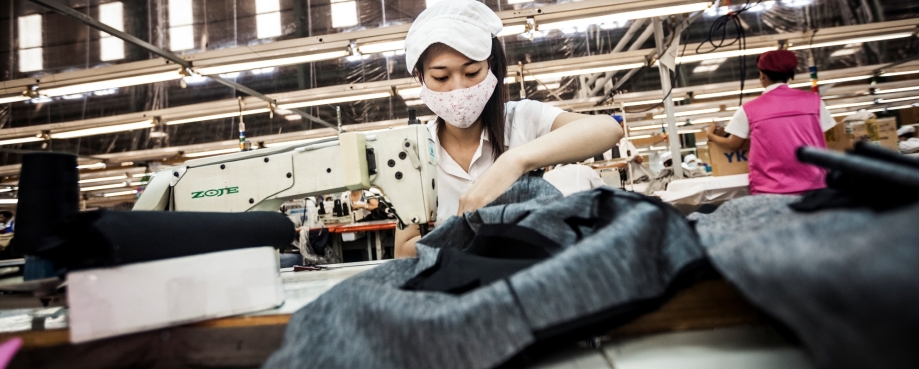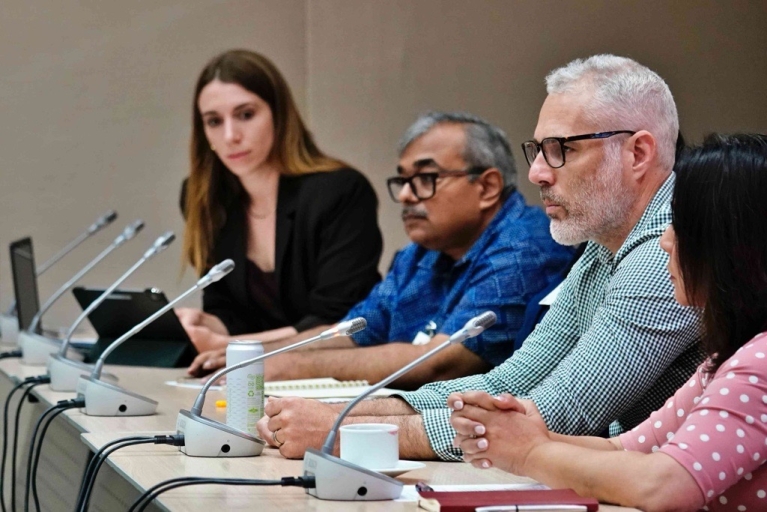
Purchasing decisions shape the lives of millions of workers, yet for decades the focus on improving labour conditions has been concentrated at the point of production rather than on upstream commercial behaviours that influence daily realities.
Even when brands implement strong labour standards, harmful buying practices – such as unrealistic lead times, last-minute order changes, or pricing pressures – can result in stress, excessive overtime, and unsafe working conditions.
These issues were a central in “From Order to Outcome: Unpacking Responsible Purchasing Practices”, a session on Responsible Purchasing Practices (RPP) hosted by Melissa Karadana, Purchasing Practices Programme Lead at the Ethical Trading Initiative, during the UN Responsible Business and Human Rights Forum in Bangkok. Speakers discussed the challenges of current purchasing practices, highlighted lessons from ETI’s RPP in manufacturing initiative, and reflected on how brands can embed accountability across their supply chains.
Many professionals are hesitant of RPP and don’t know how to have the required commercial conversations
Understanding the human impact of purchasing decisions
Mansi Gupta, Principle Advisor at Colors Consulting reflected on ETI’s RPP pilot at a stone manufacturing site in India. The project engaged directly with workers and management to understand how buyer decisions shaped operations and worker conditions. Workers reported sudden overtime, inconsistent safety training, and exclusion from health insurance for temporary staff. Many relied on informal grievance systems without structured mechanisms to raise concerns.
Suppliers echoed these challenges: inaccurate forecasts, last-minute order changes, delayed payments, and repeated specification errors disrupted production and strained cash flow. They highlighted that improving labour rights requires time, financial investment, and long-term commitment from buyers. Many buyers still prioritise low pricing, putting pressure on suppliers to meet health, safety, and labour standards within tight margins. As Mansi noted, responsibility cannot rest on one or two buyers alone; it must be shared across the industry.
In response, the buyer introduced three changes: improved forecasting and planning, timely payments, and continuous technical support. These operational adjustments reduced overtime, stabilised wages, improved workplace safety, and established formal grievance mechanisms. Mansi emphasized,
Responsible purchasing practices are not separate from HRDD; they are a critical lever within it. Any HRDD process that does not integrate RPP is incomplete.
Partnerships and shared responsibility
Sanchita Saxena, Professional Faculty at Haas School of Business, UC Berkeley, and Senior Advisor at Article One, highlighted that for decades, initiatives to improve labour conditions targeted only the point of production. As she noted, “For many decades, we have been looking in the wrong place… by focusing on improving labour conditions only at the locus of production.” She emphasised that meaningful change requires examining and adjusting brand actions across all layers of the supply chain, because purchasing practices can inadvertently harm workers.
Partnerships can create realistic expectations for suppliers, shift incentives, cascade human rights due diligence down the tiers, and benefit business outcomes. Sanchita shared a telling example from COVID-19: a supplier described how mutual support during crisis – where brands accommodated delays and minimised financial losses – created goodwill, enabling both parties to navigate challenges collaboratively. However, Sanchita also highlighted that such partnerships remain rare. Many suppliers experience unfair power dynamics, where brands impose disproportionate demands or inconsistent support, underscoring the need for legally binding agreements, clear definitions, and structured internal training.

Melissa Karadana (left), ETI's Purchasing Practices Programme Lead; Alok Singh, ETI's Asia Director; Rick Lambell, Beyond Sustainable Retail Group; and Sanchinta Saxena, Article One
Advancing RPP across supply chains
Alok Singh, Asia Director, at ETI, reflected on the challenges of embedding RPP across sectors. He noted that legislation and other accountability mechanisms play a key role in driving progress and creating a level playing field for responsible business. However, for these mechanisms to be effective, there must be a clear, shared understanding of what companies should be held accountable for when looking at RPP. While it is widely accepted that companies must review their own purchasing practices as part of HRDD there needs to be clarity on what this looks like in practice. The Purchasing Practices Due Diligence Framework[1] provides exactly this guidance, offering structure, standards, and a shared language to help companies translate accountability into action across the supply chain.
Alok also emphasised the importance of meaningful stakeholder engagement. Workers must have a voice, suppliers need safe channels to raise challenges, and brands and governments must act on these insights to drive systemic change. He highlighted the regulatory context, noting that upcoming measures like the Corporate Sustainability Due Diligence Directive (CSDDD) will require companies to examine their own purchasing practices, shifting accountability upstream and strengthening HRDD across the supply chain. Together, frameworks, standards, and engagement provide a practical route for RPP to embed responsibility, raise industry standards, and protect workers.
Bridging silos and building capacity
Rick Lambell, Founder and CEO of Beyond Sustainable Retail Group, stressed the importance of cross-functional collaboration. Many businesses operate with siloed sustainability and commercial teams, and RPP requires both to work together. He observed that fear of the unknown and lack of commercial skills often slow progress. “RPP doesn’t align well with the traditional strengths of sustainability and compliance teams…many professionals are hesitant of RPP and don’t know how to have the required commercial conversations,” he noted. Sustainability teams can play a catalytic role in building momentum, but companies must equip staff with the confidence and tools to implement responsible purchasing in practice.
Conclusion: from order to outcome
The session made it clear that responsible purchasing is not optional. Companies buying decisions – from lead times to pricing – directly shape worker realities. Evidence from ETI’s work shows that even operational improvements like better forecasting, predictable payments, and technical support can deliver tangible human rights outcomes. RPP bridges commercial efficiency and human rights, turning HRDD principles into real benefits for workers.
Embedding RPP requires partnerships, cross-functional collaboration, regulatory alignment, and genuine engagement with suppliers and workers. As Mansi Gupta highlighted, “RPP turns the intent of HRDD into action, creating the conditions for safe, equitable, and sustainable workplaces.” When brands embrace this responsibility, they not only protect workers – they strengthen supply chains, build trust, and future-proof their businesses. Accountability starts at the point of purchase.
[1]The Purchasing Practices HRDD Framework was developed in 2025 by the RPP Working Group
Responsible purchasing practices in European legislation

Responsible purchasing practices in manufacturing industries
Responsible Purchasing Practices (RPP) resource hub
Human Rights Due Diligence legislation tracker

